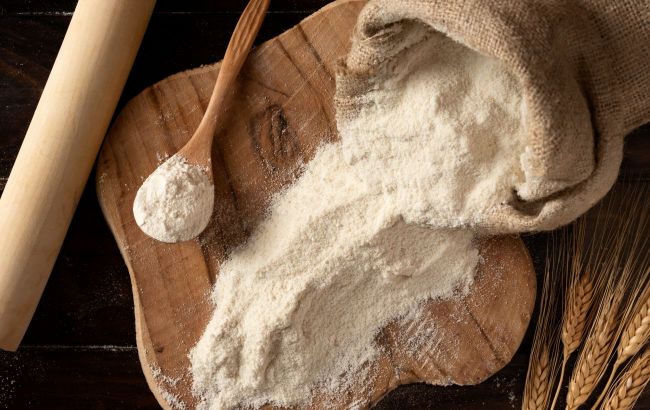Tips for selecting quality flour for various needs
 How to choose high-quality flour (photo: freepik.com)
How to choose high-quality flour (photo: freepik.com)
Flour has been a fundamental ingredient in Ukrainian cuisine for many centuries. It is used to prepare a variety of dishes, ranging from baked goods to sauces, according to Svit Porad.
What types of flour exist
There are extra, high, first, and second-grade wheat flour. The grade is usually indicated on the packaging. The grade of flour is determined based on the whiteness of the flour, the coarseness of the grind, and the gluten content. Lower grades of flour, unlike the higher grade and extra, have high nutritional value.
Flour is also distributed by types:
-
Confectionery (wheat)
-
Bakery (rye, wheat)
-
Pasta (wheat)
-
Food (barley, corn)
-
Dietary (oat, buckwheat, rice)
-
Culinary (pea)
What is cooked from different flours
Premium and extra-grade flour are of a snowy-white hue. They contain a high amount of starch and are produced from the inner part of wheat grains. These varieties are best suited for high-quality baking, making yeast, sandy, and puff pastry, as well as sauces with the addition of flour. They possess excellent baking qualities.
First grade. The shell of the grain is also employed in the production process. This flour contains more protein and fiber and has a white color (sometimes with a gray or yellowish tint). It possesses excellent baking properties due to its high fiber content - the dough becomes elastic, and the products turn out tasty and aromatic. Suitable for making bread and pastry products, pasta, baking pies, and unleavened goods.
Second grade. This flour appears darker with a yellow, gray, or brownish tint. Baked goods from this flour turn out rich and tasty. It is used for baking bread, unleavened pastries, making pancakes, waffles, dumplings, and pelmeni. In some recipes, it is combined with rye flour.
Coarse-milled wheat flour (whole wheat). The most beneficial flour, as it contains all components of the wheat grain. Whole wheat flour contains more vitamins and useful trace elements than all types of wheat flour. Suitable for making nutritious bread.
How to choose flour
Experts recommend selecting flour only in paper packaging, as such a product has better air circulation and preserves the properties of the product. Pay attention to the smell of the packaging, which should not be musty, as it may indicate prolonged storage.
Quality flour should stick to your hands, easily compress, and produce a crispy sound.
Study the information on the package - the grade and type of flour are indicated there. Next, look at the shelf life (the fresher, the better), quality marks, and certification (state standard, certificate).
Checking flour at home for chalk content is very simple. Mix flour with water and add a couple of drops of table vinegar. If the mixture starts to fizz, there is chalk in the flour.

